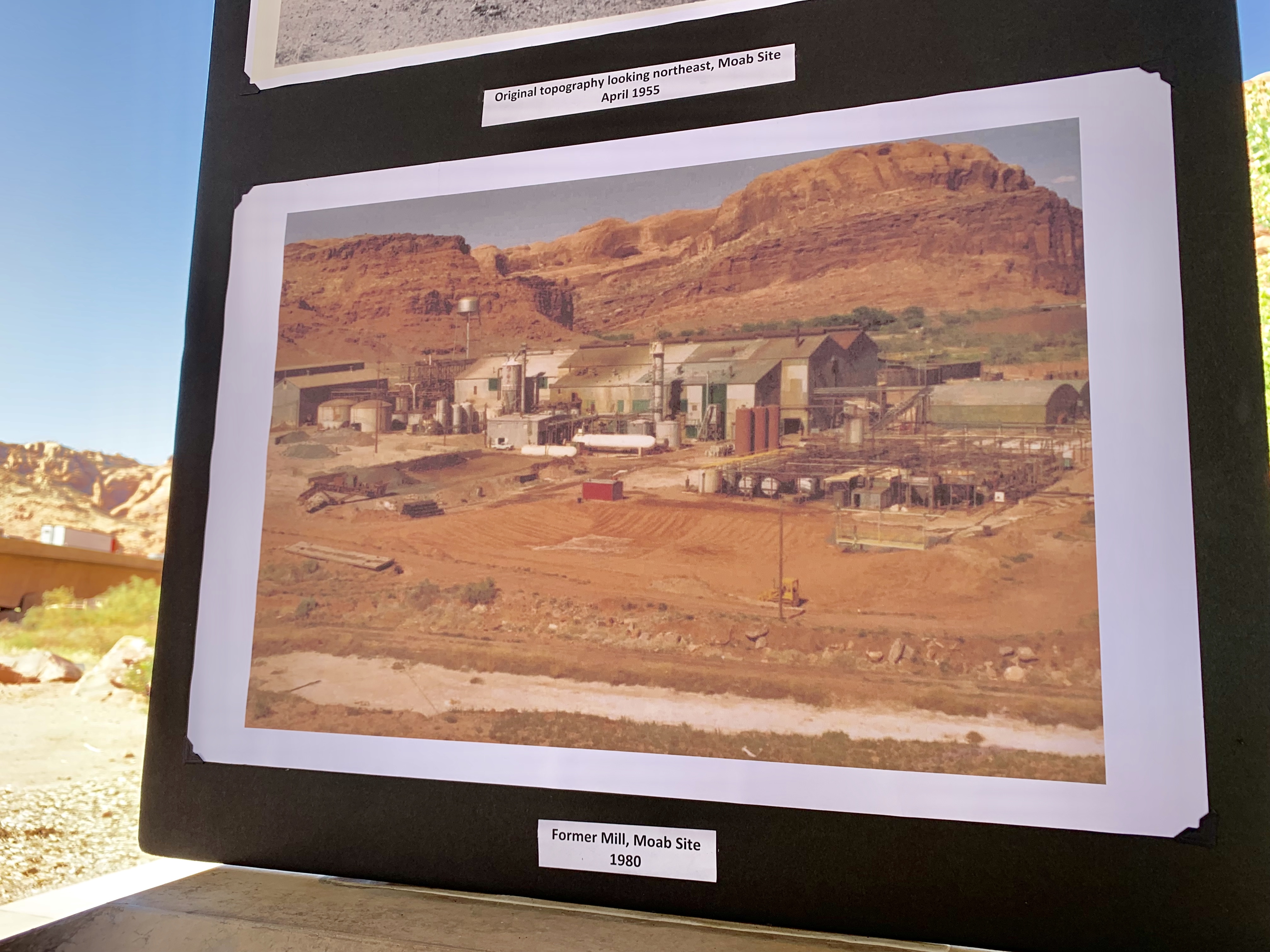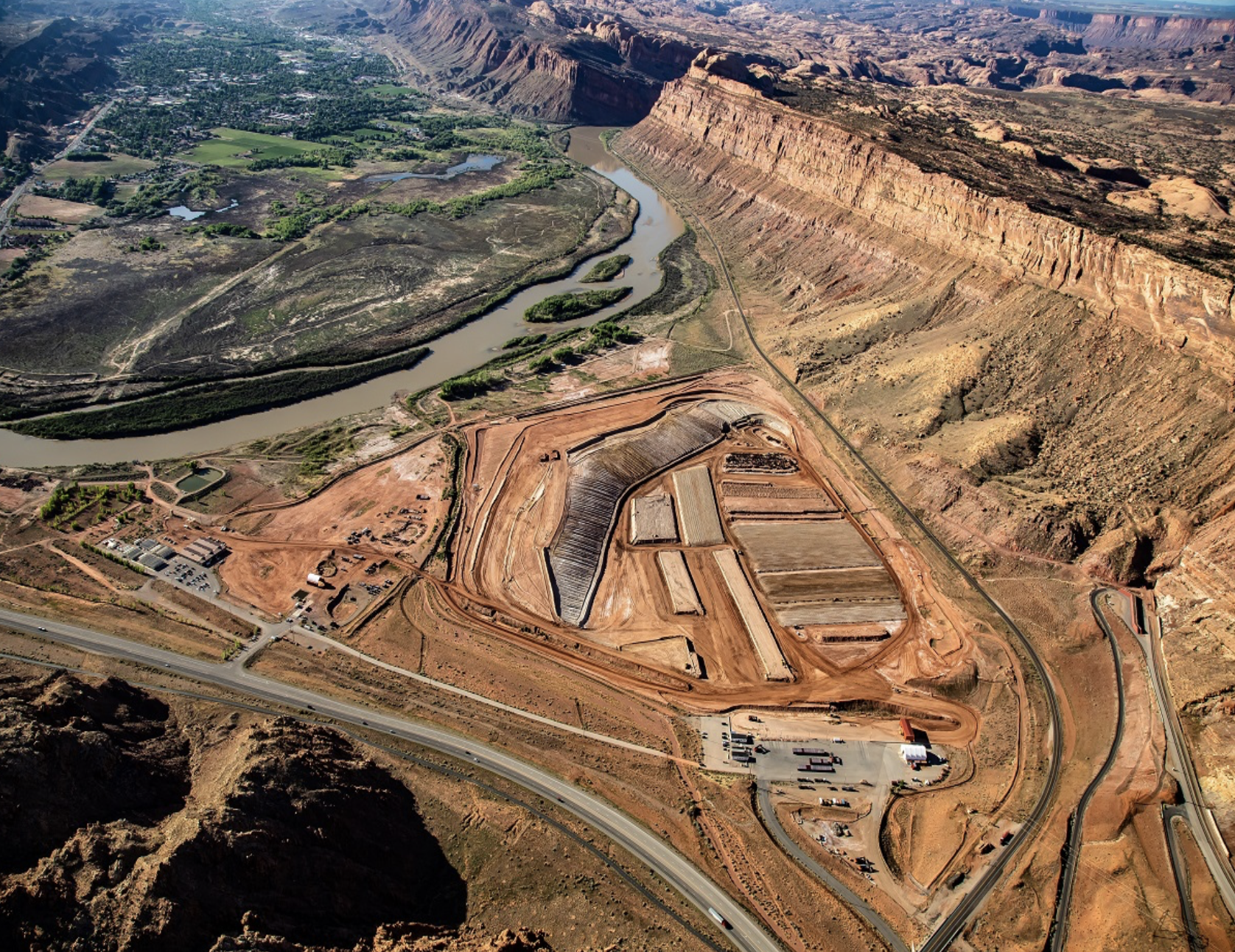In a park, nestled in a red rock canyon outside Moab, Utah—a short drive from a giant pile of uranium tailings—a crowd gathered for a celebration. Elected officials and community members mingled and enjoyed refreshments. Volunteers placed pieces of yellow cake in small paper bowls.
It was a facetious nod to the gathering’s purpose: to celebrate the removal of 10 million tons of toxic uranium tailings from the banks of the Colorado River.
“You never would have thought you would have all these people congratulating themselves in the community on moving 10 million tons,” said Sarah Fields, executive director of the nonprofit Uranium Watch. “They seem to be really dedicated to getting this done.”
Communities throughout the American West have spent decades cleaning up what the mining industry left behind. In Moab, those leftovers are the visible pile of uranium tailings, left alongside on the banks of arguably the region’s most important water source.
Fields’ group advocates for the protection of public health and the environment from the impacts of uranium mining. She and others gathered at the party have a long history with this project.
The Moab Uranium Mill Tailings Remedial Action site–better known to locals as the Moab Pile–is a leftover from the town’s Cold War uranium days. When the town’s uranium boom went bust in the early 1980s, a 16-million-ton scar of toxic tailings was left sitting next to the river, just downstream from Arches National Park.

A photo shows the former uranium mill, before a mining bust left the mine inoperable. (Molly Marcello/KZMU)
“It makes a difference to the community when you have very hazardous waste sitting on the floodplain of a major river, it makes a big difference that it’s not going to be there,” Fields said.
Before cleanup efforts began about 10 years ago, elevated levels of uranium and ammonia were showing up in the river’s water near Moab. The contamination alarmed officials downstream in Nevada and California, and they called for the Department of Energy to step in.
Getting the pile out of the floodplain became a community rallying cry as well, Fields said.
“The (Department of Energy) pretty much from the beginning realized that if they decided to leave it in place they would be standing alone because the town, the city, most of the members of the community, the state, the EPA all said, ‘Move the pile,’” Fields said.
Workers began moving the pile in 2009. The tailings are loaded into train cars and sent 30 miles north where they’re stored away from the river in the middle of the desert. With the 10 millionth ton moved, more than 62% of the pile is gone, which means many Moabites could see completion in their lifetimes.
“If we have a huge flood, that’s not good,” said Grand County council member Mary McGann. “It’s an environmental hazard and we need to remove it from the banks of the Colorado River.”
Since cleanup began, the site has partially flooded a couple times including in 2011, one of the river’s highest flow years in the past 20 years. Even with the flooding that year, federal researchers documented no elevated radiological levels in the river’s water.
Still, McGann and other local elected officials have year after year lobbied the Department of Energy to allocate more funding to the project. Unlike other cleanup sites under the Department’s Office of Environmental Management, officials say the completion of the Moab project is within reach, perhaps just over a decade away.
During her remarks at the celebration, McGann described growing up in Moab in the 1950s and 60s when Grand County fully embraced the uranium industry.
McGann’s father was the superintendent of the uranium mill responsible for creating the Moab pile. McGann said at the time, most people in Moab were largely unaware of the health and environmental hazards of the uranium industry.
“It was not long before my dad passed away, he was getting word that this was not safe,” McGann said to the gathered crowd.
She recalled her dad coming home with a Geiger counter, and waving it through the rooms of their house, feeling remorse that he’d exposed the whole family to radiation.
“So I think he realized that, without malice, they had made a mistake,” McGann said. “When you make a mistake, you fix it and that’s what we’re doing.”
Although her father helped build the pile, McGann told attendees that she, along with the help of many others, will continue tearing it down.
This story is part of a project covering the Colorado River, produced by KZMU and KUNC, and is supported through a Walton Family Foundation grant. The project is solely responsible for its editorial content.






